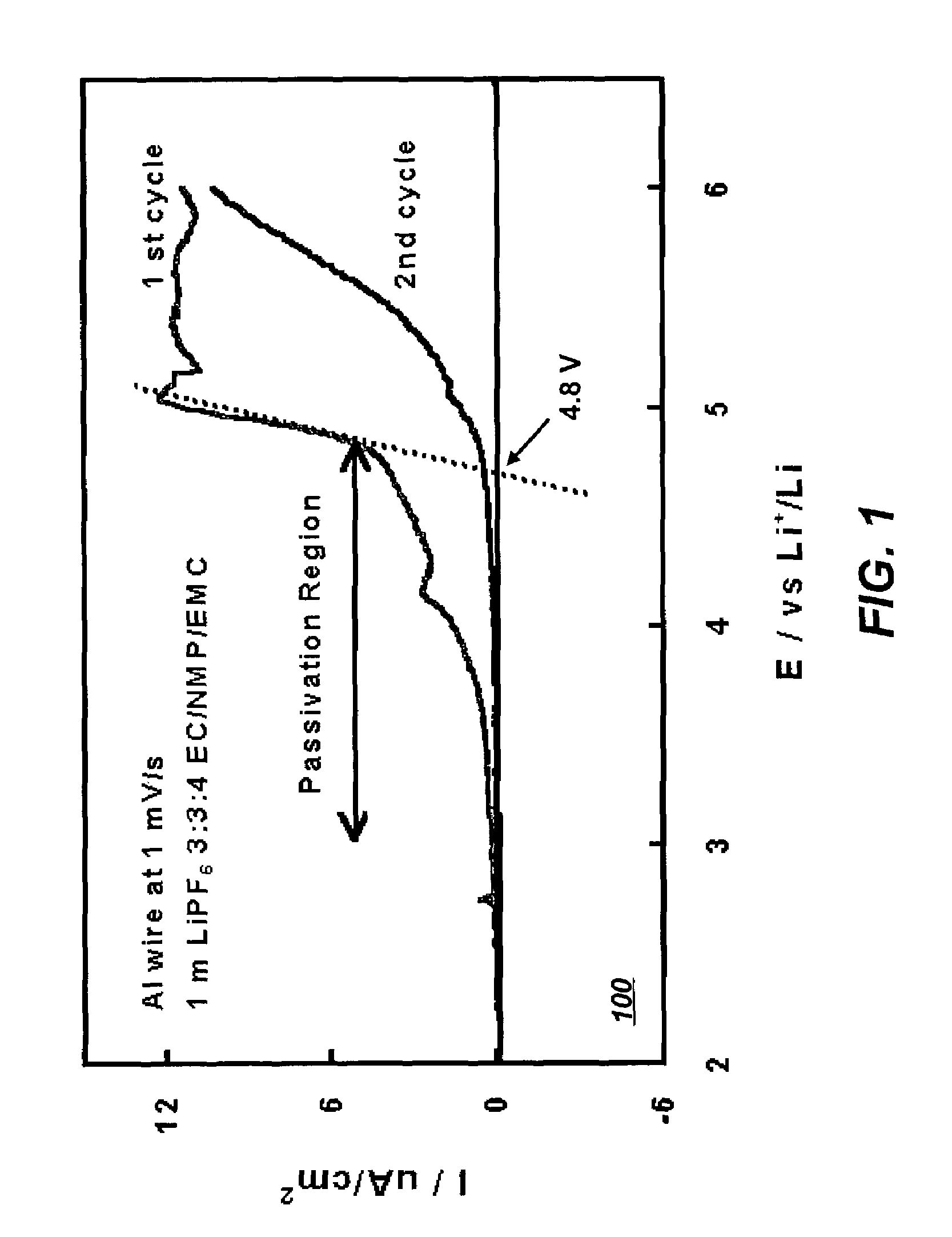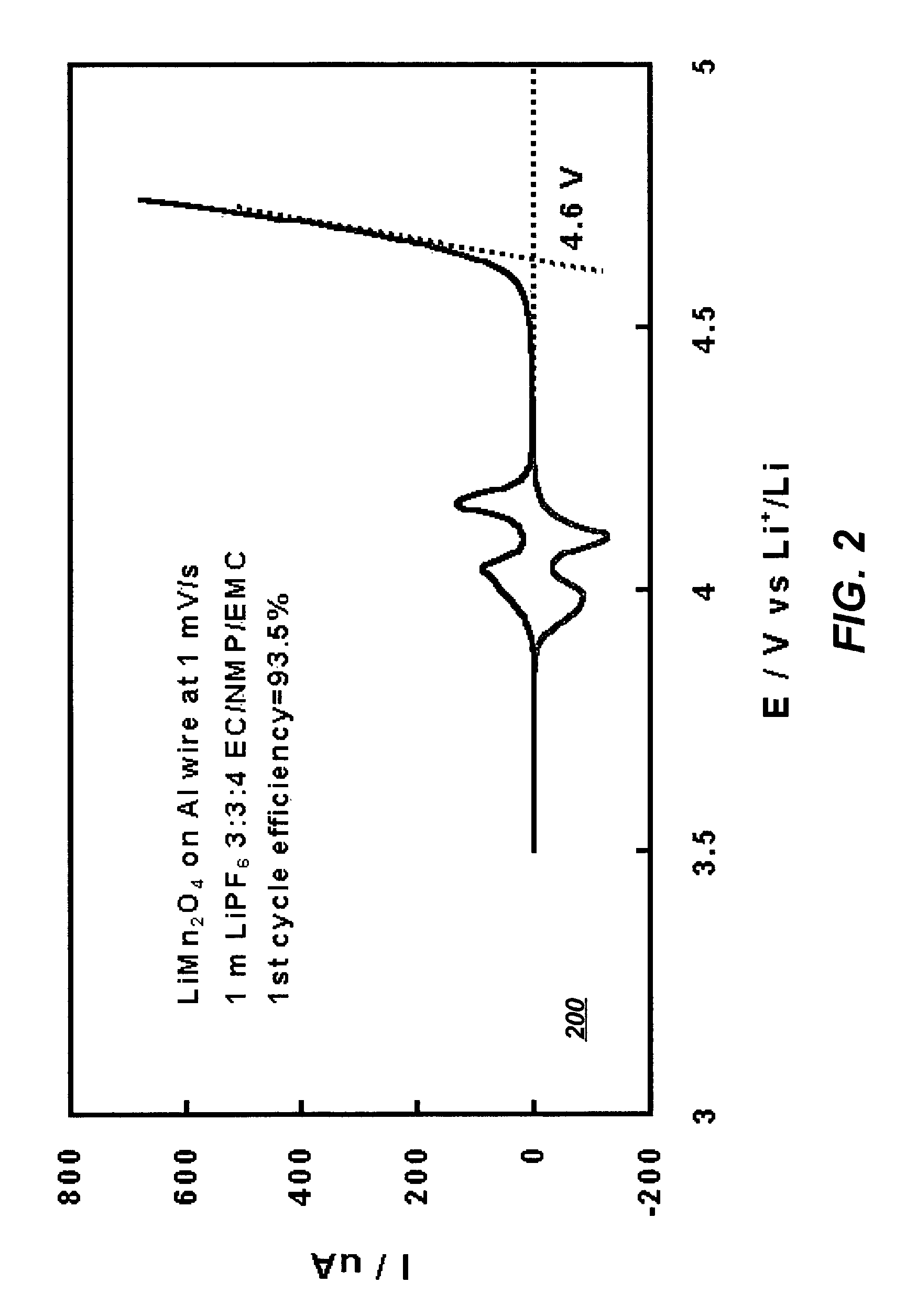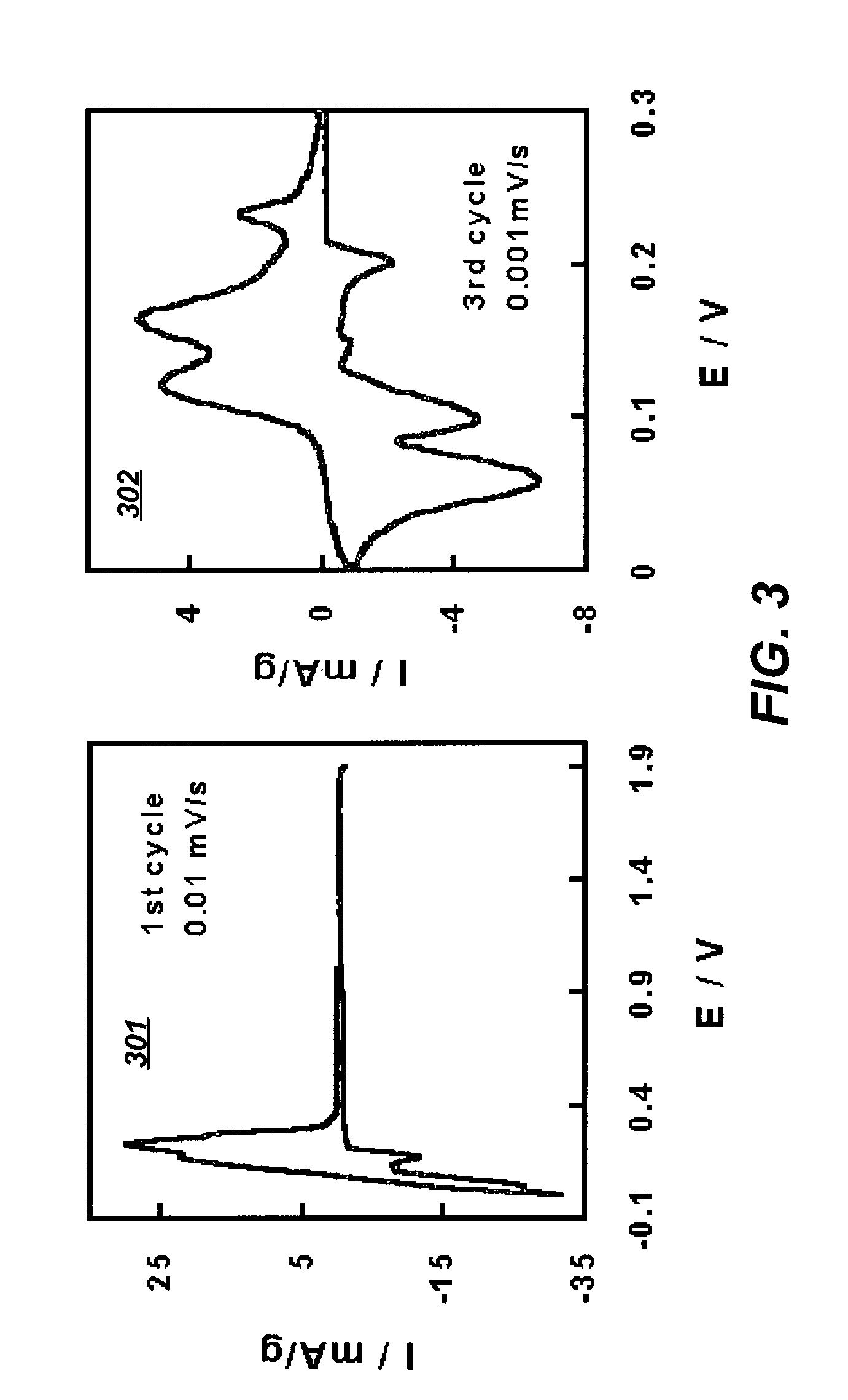Solvent systems comprising a mixture of lactams and esters for non-aqueous electrolytes and non-aqueous electrolyte cells comprising the same
- Summary
- Abstract
- Description
- Claims
- Application Information
AI Technical Summary
Benefits of technology
Problems solved by technology
Method used
Image
Examples
example i
[0036]Handling of the dried solvents, the lithium salts and the electrolyte solutions were carried out in argon-filled glove boxes, where the relative humidity was below 5 ppm and oxygen levels below 10 ppm were maintained. Ethylene carbonate and ethylmethyl carbonate (electrolyte grade) were mixed according to certain ratios and then subjected to a Karl-Fischer titration. The moisture content was below 10 ppm in all cases. N-methylpyrrolidinone (NMP) was added according to different desired weight percentages, in a range between 2% up to 90%. After thoroughly mixing, 1.0 modality of LiPF6 or LiBF4 was added into the solvent mixture. The solution was shaken occasionally to accelerate the salt dissolution. Two electrolyte compositions of 1 m LiPF6 in EC:NMP:EMC (3:3:4 wt) and in EC:NMP:EMC (1:1:3 wt.) were used for illustrative purposes. The stability of the electrolyte solutions was then subject to various tests to demonstrate its advantage for use with an Li-ion battery.
example 2
[0037]Linear sweep voltammetry was used to determine the stability of Al in the electrolytes of Example 1. FIG. 1 depicts a graph too indicating the corrosion current as a function of voltage of an Al current collector in an electrolyte system that includes solvents of the present invention in accordance with a preferred embodiment of the present invention. As depicted in FIG. 1, Al can be passivated in the potential range above 4.0 V (vs. Li / Li+) in the electrolyte of 1 m in LiPF6 in EC NMP EMC (3:3:4), and the anodic dissolution of Al is effectively suppressed in subsequent scans. Stabilization of Al ensures that the electrolytes formulated in this invention will withstand high charging voltages in Li and Li-ion cells.
example 3
[0038]Stability of the electrolyte solution of Example I was further tested against a commonly known lithiated manganese spinel cathode material using cyclic voltammetry. FIG. 2 illustrates a graph 200 depicting the oxidative stability of an electrolyte system that includes the solvents of the present invention with respect to a cathode in accordance with a preferred embodiment of the present invention. As illustrated in FIG. 2, the major decomposition of the NMP-containing electrolytes start at potentials above 4.6 V, well above the range where reversible intercalation chemistry of Li-ion occurs. This result proves that the electrolyte of the present invention can operate with high stability utilizing a lithiated manganese spinel cathode.
PUM
 Login to View More
Login to View More Abstract
Description
Claims
Application Information
 Login to View More
Login to View More - R&D
- Intellectual Property
- Life Sciences
- Materials
- Tech Scout
- Unparalleled Data Quality
- Higher Quality Content
- 60% Fewer Hallucinations
Browse by: Latest US Patents, China's latest patents, Technical Efficacy Thesaurus, Application Domain, Technology Topic, Popular Technical Reports.
© 2025 PatSnap. All rights reserved.Legal|Privacy policy|Modern Slavery Act Transparency Statement|Sitemap|About US| Contact US: help@patsnap.com



